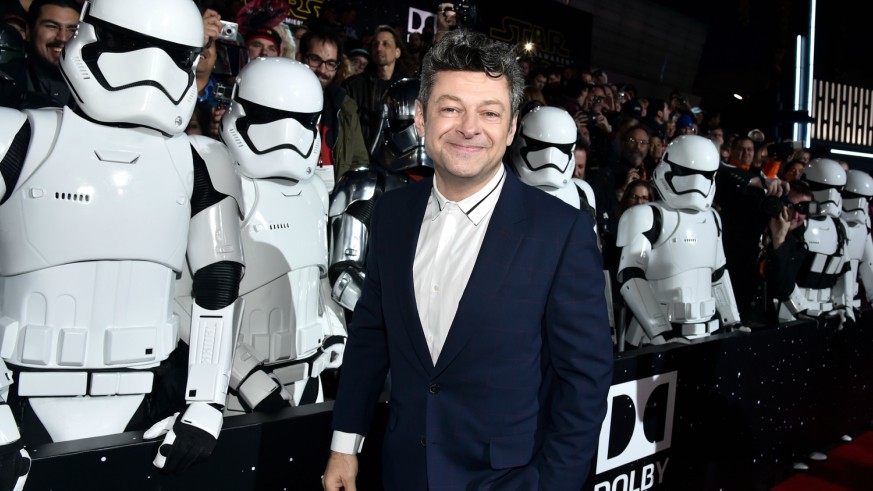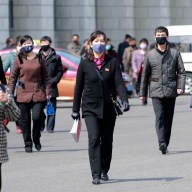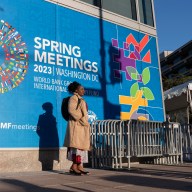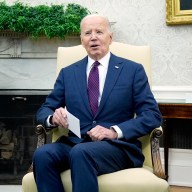Andy Serkis was only supposed to reprise his motion-capture performance as Gollum when Peter Jackson announced he’d return to Middle-earth for “The Hobbit” trilogy, which now concludes with its third film, “The Battle of the Five Armies.” Then the filmmaker asked him if he’d also be his second-unit director. Serkis wound up with a sweet lead director gig, helming the mo-cap film of “The Jungle Book.” But before than he spent 260 days directing parts of an entire trilogy, in addition to acting in a scene with Biblo Baggins portrayer Martin Freeman. Among other things, the “Hobbit” films have been revolutionary in terms of using higher frame rate; where film is 24 frames per second, this is 48. How was it for you and the other filmmakers making such a huge adjustment? When you’re working every single day for that length of time you forget. You go back to watching 24 frames per second and you think, “Gosh, this is very muddy. But I do love 24 as well. I love both. I applaud Pete for inviting it, because I think it’s absolutely the way things are going to be going. It particularly works well with the CG characters in live-action environments. It does something to the brain where you really do believe those things exist. It seemed like a miracle when Gollum first appeared in “The Two Towers,” but performance capture technology has evolved so much since then. How was it different for you as an actor?
In between, with [special effect company] Weta we shot “Rise” and “Dawn of the Planet of the Apes.” By then we were able to film performance capture on live-action sets. But this was the first time we did it in Middle-earth. When we shot the “riddles of the dark passage” scene with Martin, we were able to shoot the whole straight through in one take. That’s the great thing about shooting in digital: You can let the tape roll — or the data roll — and were able to shoot the scene in its entirety from beginning to end, 13 minutes all in one take. With the old technology we’d always have to go back and reshoot it on a motion capture stage separately, whereas with this you only had to do it once. How does that change your acting?
It was like a chamber piece of theater. Not having to repeat it meant you had this connectivity in terms of performance. The head-mounted cameras have much higher resolution; they can trace facial expressions and give a greater sense of fidelity to the performance on-set. And Weta had been working on a new level of software in post-production that was able to translate the performance onto the avatar characters. And after so many films together, surely Weta knows everything about your face.
Totally. They’ve got thousands of scans of my face. They know every single muscle twitch I make and they know every single expression that goes with every single one. It’s like a lie detector test. There’s this temptation to think that when a new technological breakthrough has been achieved that this is it, this is what everyone was working towards. But technology is always evolving. Where do you think it can go next? In the U.K., where I have my studio, we’re working on “The Jungle Book.” There are different methodologies of bringing performance capture into characters that aren’t humanoid — into doing quadropeds and how do you achieve that? There’s still a long way for that to go. The great thing is this is an incredibly liberating tool that allows you to play anything. As someone who’s a pioneer at motion capture acting, do you feel it requires a different acting methodology? Do you need to teach other actors who try it?
In terms of the acting process it’s exactly the same. There are certain who will want to work in this way, who have the facilities and the desire to lose themselves in a character. If you’re an actor whose livelihood requires your face being on-screen, then this probably isn’t the type of acting for you. On “The Jungle Book” we’ve got great actors, like Christian Bale and Benedict Cumberbatch and Cate Blanchett and Eddie Marsan, right across to Peter Mullan and Jamie Harris. They’re great actors who’ve experienced it for the first time and loved it and really embraced it. They wouldn’t have said it was anything but acting. How is “The Jungle Book” going?
We’ve got a long ways to go, obviously, but I think this version will be groundbreaking in terms of applying what we know and how we’ve used it. It’s very exciting. I’m loving it.
Interview: Andy Serkis on ‘The Hobbit’ and ‘The Jungle Book’

Eric Charbonneau
Follow Matt Prigge on Twitter @mattprigge














